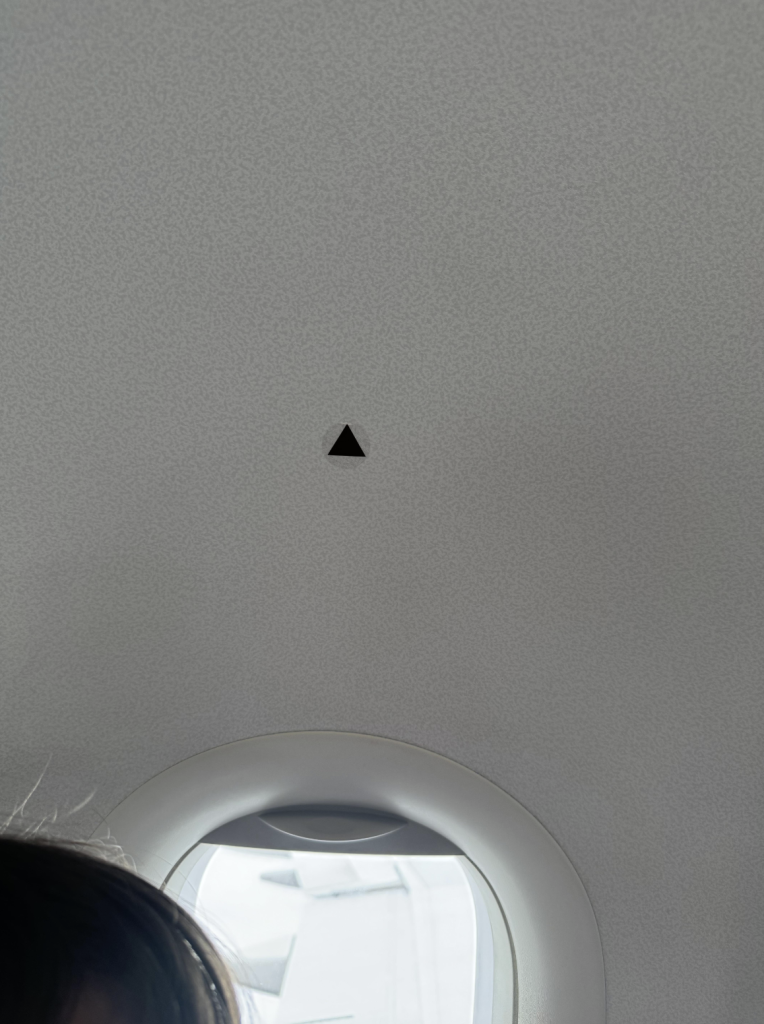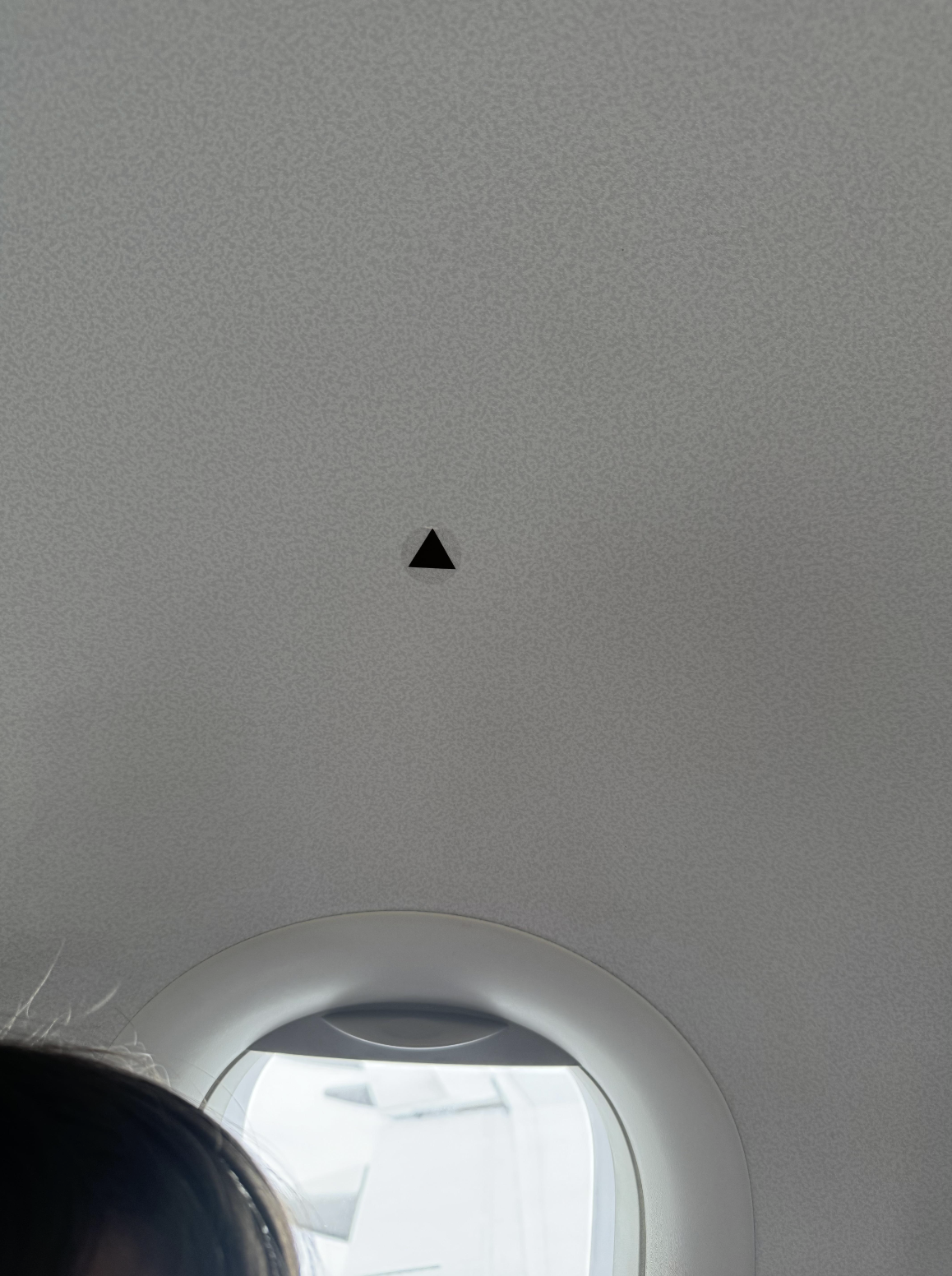Explained: How This Small Black Triangle Helps Keep Passengers from Becoming Nervous
If you’ve ever glanced up while seated on a plane and noticed a small black triangle above certain windows, you might have wondered, What’s that for? Rest assured, it’s not a mysterious omen or an Illuminati marking—although it does have an important job. This unassuming triangle is known as a “seat locator” or “witness mark,” and it plays a subtle yet vital role in ensuring safety. So, what does it actually do? Let’s dive into the surprising purpose behind this little black marker.

What Is the Black Triangle?
On many commercial aircraft, particularly those with larger wings and engines, you’ll find a small black triangle above certain windows, typically located near the wings. The purpose? It serves as a quick reference point for the flight crew to locate a window with the best possible view of the aircraft’s wings and engines. This view allows them to visually check for any unusual issues, such as ice buildup or structural irregularities.
While this may sound serious, it’s actually a standard procedure that helps keep flights safe and smooth. The crew doesn’t use this triangle because they expect trouble; it’s just one of the many precautionary measures in place to make sure everything is operating as it should. So next time you spot this little marker, you can feel a bit like an aviation insider. You now know it’s a safety feature hidden in plain sight.
A Personal Experience: The Triangle in Action
As an aviation enthusiast who’s spent countless hours in the skies, I have a little story about this triangle and its real-life importance. On one particularly snowy day, I was leaving Geneva on a flight that had just been de-iced at the gate. We taxied out to the runway, ready for takeoff. But before we sped down the runway, the captain stepped out of the cockpit and headed toward a window. And yes, you guessed it—he used that little black triangle to find the best vantage point to check the wing.
He was looking for snow buildup that might have occurred since the de-icing, given how quickly snow can accumulate on an aircraft surface in such weather. On one hand, I was comforted. It was reassuring to see that the captain cared enough to make sure everything was absolutely safe before we took off. On the other hand, I couldn’t help but think, Wait, is there actually enough snow on the wing to be a problem? That tiny moment of concern quickly passed, though, because I understood that this check was simply a thorough precaution.
For passengers who aren’t as familiar with aviation procedures, seeing a crew member peer out the window might look unsettling, as if they’re checking to see if something’s wrong. In reality, though, this inspection is routine and necessary to make sure the plane is fully ready for flight. It’s all part of the many steps that the crew takes to keep passengers safe.
Why This Triangle Matters
The reason for these checks goes beyond snow. Ice accumulation, for example, can affect the aerodynamics of a wing and reduce the aircraft’s performance, which is why it’s taken so seriously. And while aircraft are equipped with de-icing and anti-icing systems, visual confirmation is always a good idea, especially in extreme weather.
Crew members rely on the triangle to save time and make sure they’re getting the most effective view of critical areas. Imagine trying to find the perfect window to look out of in the middle of a busy flight. This little triangle removes the guesswork, directing the crew to a window where they can get the best possible look at the wings and engines.
But Why Could This Make Passengers Nervous?
It’s understandable that passengers might feel a bit uneasy seeing a crew member gazing out the window, especially before takeoff. However, rest assured, this is a normal procedure. In fact, it’s a testament to the crew’s dedication to safety.
The triangle ensures they’re looking in the right spot, not simply at any random view of the wing. So, if you ever spot your flight attendants or even the captain using it, remember that it’s not a cause for concern but rather a small part of a much larger safety routine.
Next Time You Fly…
Now that you know the purpose of the black triangle, you have a new piece of aviation trivia to share with your fellow passengers. Next time you fly, keep an eye out for this little marker above the window. It’s a quiet reminder that every aspect of your flight, down to the tiniest details, is carefully thought through to keep you safe.
So, don’t be alarmed if you catch the crew taking a look out the window—they’re simply following a procedure designed to give everyone on board peace of mind. And now, armed with this knowledge, you can enjoy your flight with one less mystery in the skies.
Key Takeaways
- The small black triangle above certain airplane windows is known as a “seat locator” or “witness mark.”
- It helps the crew quickly find the best vantage point to observe the wings and engines for any issues.
- Passengers might feel nervous seeing crew members looking out, but this is a routine safety check.
- Next time you fly, look for this triangle and enjoy knowing a bit more about the thoughtful details that keep flights safe.

Leave a Reply